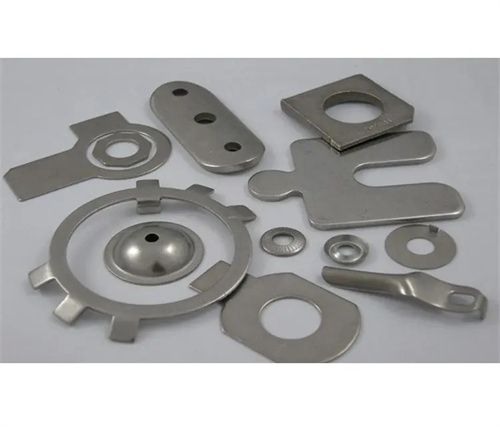Welded steel pipes for heat exchangers
Welded steel pipes for heat exchangers are used to transfer heat in various types of heat exchangers (such as shell-and-tube heat exchangers, plate heat exchangers, and fin-tube heat exchangers). With excellent thermal conductivity, corrosion resistance, and cost-effectiveness, they play a core role in heat exchange systems in industries such as chemical, power, metallurgy, and refrigeration. They typically have diameters of 10-50 mm and wall thicknesses of 1-3 mm. Materials are selected based on the characteristics of the heat transfer medium and include carbon steel (Q235, 20#), low-alloy steel (16Mn), and stainless steel (304, 316). Stainless steel welded pipes, due to their excellent corrosion resistance, are widely used in heat exchangers handling acidic and alkaline media.

The production process for welded steel pipes used in heat exchangers requires precision processes including strip forming, welding, heat treatment, and finishing. First, high-precision steel strips are selected with a thickness tolerance of ≤±0.05 mm and a width deviation of ≤±0.1 mm. These strips are then degreased and cleaned to remove surface impurities. The forming process utilizes a continuous roll-forming machine to roll the steel strips into round tube billets. The misalignment between the tube ends is controlled to ≤0.1 times the wall thickness to ensure weld quality. The welding process varies depending on the material used. Carbon steel and low-alloy steels are typically welded using high-frequency resistance welding (HFRW) at a frequency of 200-400 kHz. This process uses resistance heat to melt and extrude the joints, with welding speeds of 15-30 m/min. After welding, internal and external burrs are removed to ensure a smooth inner surface. Stainless steel pipes are welded using tungsten inert gas (TIG) welding, using an inert gas shielded weld pool and a welding current of 50-150 A to ensure the weld’s corrosion resistance matches that of the parent material. Heat treatment is a critical step. Carbon steel pipes undergo normalizing (900-950°C), while stainless steel pipes undergo solution treatment (1050-1100°C). This eliminates welding stress and the heat-affected zone, ensuring uniform mechanical properties. Finally, they undergo a hydrostatic test (test pressure ≥ 2 times the design pressure) and eddy current or ultrasonic testing to ensure the absence of leaks and internal defects. Dimensional accuracy is controlled within a diameter tolerance of ±0.1 mm and a wall thickness tolerance of ±0.05 mm.

The performance advantages of welded steel pipes for heat exchangers make them significantly competitive in the heat exchange field. First, they offer excellent heat transfer performance. The thermal conductivity of 20# carbon steel pipes is ≥ 45W/(m・K) , and that of 304 stainless steel pipes is ≥ 16W/(m・K) . With a reasonable wall thickness design ( 1-2 mm), heat can be effectively transferred, and the heat transfer coefficient of the heat exchanger can reach 500-2000W/(m²・K) . Second, they offer excellent corrosion resistance. The corrosion rate of stainless steel pipes in acidic and alkaline media is ≤ 0.01mm/ year, and low-alloy steel treated with an anti-corrosion coating in neutral aqueous media can have a service life of 8-10 years. Third, they offer high mechanical properties. The tensile strength of Q345 steel pipes is ≥ 470MPa , which can withstand the working pressure of the heat exchanger (usually 0.5-4M Fourthly, it has high dimensional accuracy, with the inner wall roughness Ra≤1.6μm, which reduces fluid flow resistance and improves heat exchange efficiency. Fifthly, it has obvious cost advantages. Compared with seamless steel pipes, the production cost of welded steel pipes is reduced by 20%-30%, and longer lengths (6-12 meters) can be produced, reducing the number of splicing of heat exchanger tube bundles.

Across various application scenarios, welded steel pipes for heat exchangers are core components of various heat exchange equipment. In the chemical industry, coolers in synthetic ammonia and methanol plants utilize 16Mn low-alloy welded steel pipes with diameters of 25-50 mm and wall thicknesses of 2-3 mm, suitable for medium- and high-pressure heat exchange conditions. In the power industry, condensers in thermal power plants utilize 316L stainless steel welded pipes with diameters of 16-25 mm to resist corrosion from circulating cooling water. In the metallurgical industry, oil coolers in rolling mills utilize 20# carbon steel welded pipes, whose fins enhance heat dissipation and maintain oil temperatures below 50°C. In the refrigeration industry, copper-clad steel welded pipes (with an inner layer of copper and an outer layer of steel) are widely used in evaporators and condensers in air conditioners and cold storage facilities, balancing thermal conductivity and strength. In the food and pharmaceutical industries, sanitary-grade stainless steel welded pipes (with an inner surface finish of Ra ≤ 0.8μm) are used in material heat exchangers to meet cleanliness and hygiene requirements.

Industry trends indicate that welded steel pipes for heat exchangers are moving toward high corrosion resistance, high efficiency, and thinner walls. High-alloy corrosion-resistant steel pipes (such as duplex stainless steel 2205 and nickel-based alloy 825) are suitable for extreme heat exchange environments such as high acid and alkali concentrations, high temperature, and high pressure, reducing corrosion rates to below 0.005mm/year. High-efficiency heat exchange structural designs (such as internally threaded and externally finned welded steel pipes) increase heat transfer area by 50%-100% and reduce heat exchanger volume by over 30%. Breakthroughs in thin-wall production technology allow wall thicknesses to be reduced to 0.5-1mm while maintaining strength, further reducing thermal resistance and improving heat transfer efficiency. Furthermore, the promotion of intelligent welding technology, including the use of laser welding and adaptive welding parameter control, ensures consistent weld quality. Green manufacturing processes, through waste heat recovery and waste material utilization, reduce unit energy consumption by over 15%. In the future, with the increasing requirements for industrial energy conservation and environmental protection, the demand for efficient and long-lasting heat exchangers will continue to grow, driving greater progress in material research and development and structural innovation of welded steel pipes for heat exchangers.
